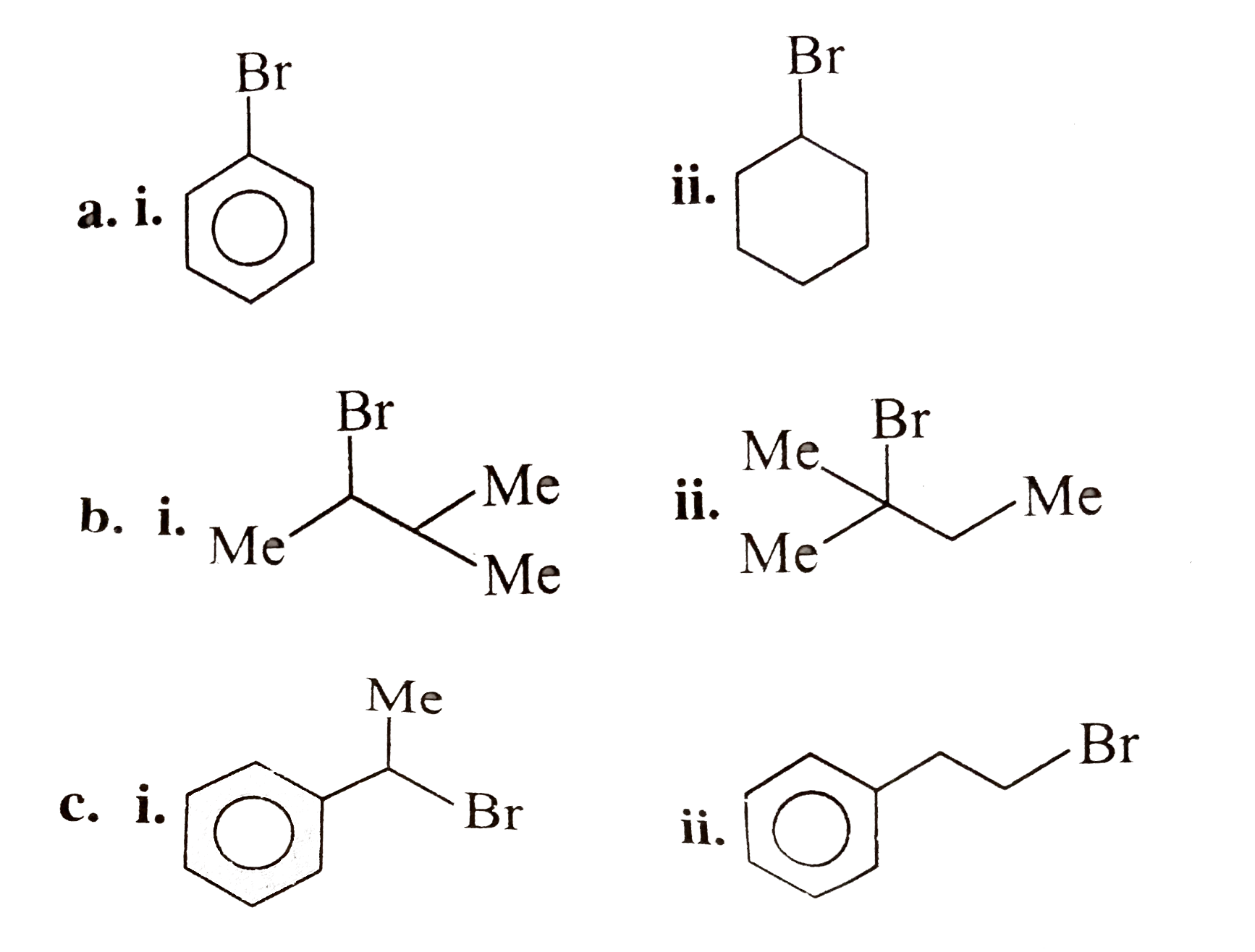t-butyl chloride reacts with OH− by SN1 mechanism with rate ∝ [tert. Butylchloride]. One of the reason for the reaction to be first order is that
A stereochemical inversion takes place
The t-butyl carbocation is first formed which is more stable
The intermediate t-butyl carbocation is formd which is unstable
All of the above
The correct Answer is:B
SN1 mechanism
Topper's Solved these Questions
- HALOGEN DERIVATIVES OF ALKANES (AND ARENES)BOOK - MARVEL PUBLICATIONCHAPTER - HALOGEN DERIVATIVES OF ALKANES (AND ARENES)EXERCISE - HIGHER LEVEL
69 Videos
- HALOGEN DERIVATIVES OF ALKANES (AND ARENES)BOOK - MARVEL PUBLICATIONCHAPTER - HALOGEN DERIVATIVES OF ALKANES (AND ARENES)EXERCISE - PREVIOUS YEARS ENTRANCE EXAMS MCQ
23 Videos
- GENERAL PRINCIPLES AND PROCESSES OF ISOLATION OF ELEMENTSBOOK - MARVEL PUBLICATIONCHAPTER - GENERAL PRINCIPLES AND PROCESSES OF ISOLATION OF ELEMENTSEXERCISE - Test Your Grasp
30 Videos
- ORGANIC COMPOUNDS CONTAINGING NITROGEN BOOK - MARVEL PUBLICATIONCHAPTER - ORGANIC COMPOUNDS CONTAINGING NITROGEN EXERCISE - TEST YOUR GRASP
40 Videos
Similar Questions
Knowledge Check
Value of t1/2 for first order reaction is
A0.693KB0.2303KCR2D0.301kHalf life (t12) of first order reaction is
Adependent of concentrationBindependent of concentrationCdependent of timeDdependent of molecularityRelative rate of SN1 reaction for t-butyl bromide?
A37B0.02C106D1
Explain why
(a) the dipole moment of chlorobenzene is lower than that of cyclohexyl chloride ?
(b) alkyl halides, though polar, are immiscible with water ?
(c) vinyl chloride is unreactive in nucleophilic substitution reactions ?
(d) neopentyl bromide undergoes nucleophilic substitution reactions very slowly ?
(e) 3-bromocyclohexane is more reactive than 4- bromocyclohexane in hydrolysis with aqueous NaOH ? (f) tert butyl chloride reacts with aqueous sodium hydroxide by SN1 mechanism while n-butyl chloride reacts by SN2 mechanism.
(g) Grignard reagents should be prepared under anhydrous conditions ?
View SolutionOf the following statements , which are true for SN2 reaction.
(a) Tertiar alkyl halides reacts faster than secondary.
(b) The absolute configuration of product is opposite to that of the reactant when an optically active substrate is used.
(c) The used shows first order kinetics.
(d) The rate of the reaction depends markedly on the nucleophilicity of the attacking reagent.
(e) The mechanism is one step.
(f) Carbocations are intermediate.
(g) Rate ∝ [Alkyl][halides]
(h) The rate of the reaction depends on the nature of the leaving group.
View SolutionFor a first order reaction, the ratio of t1/2 to t3/4 is
View SolutionCo =initial concentration of the reactant Ct = concentration of the reactant at time t, k=rate constant of the reaction. Then the equation applicable for a first order reaction is
View SolutionAssertion:of tert butylchloride with Na gives 2,2,3,3-tetramethy butane
Reason Tert butyl chloride on Wurtz reaction gives alkene.
View Solution

 .
.